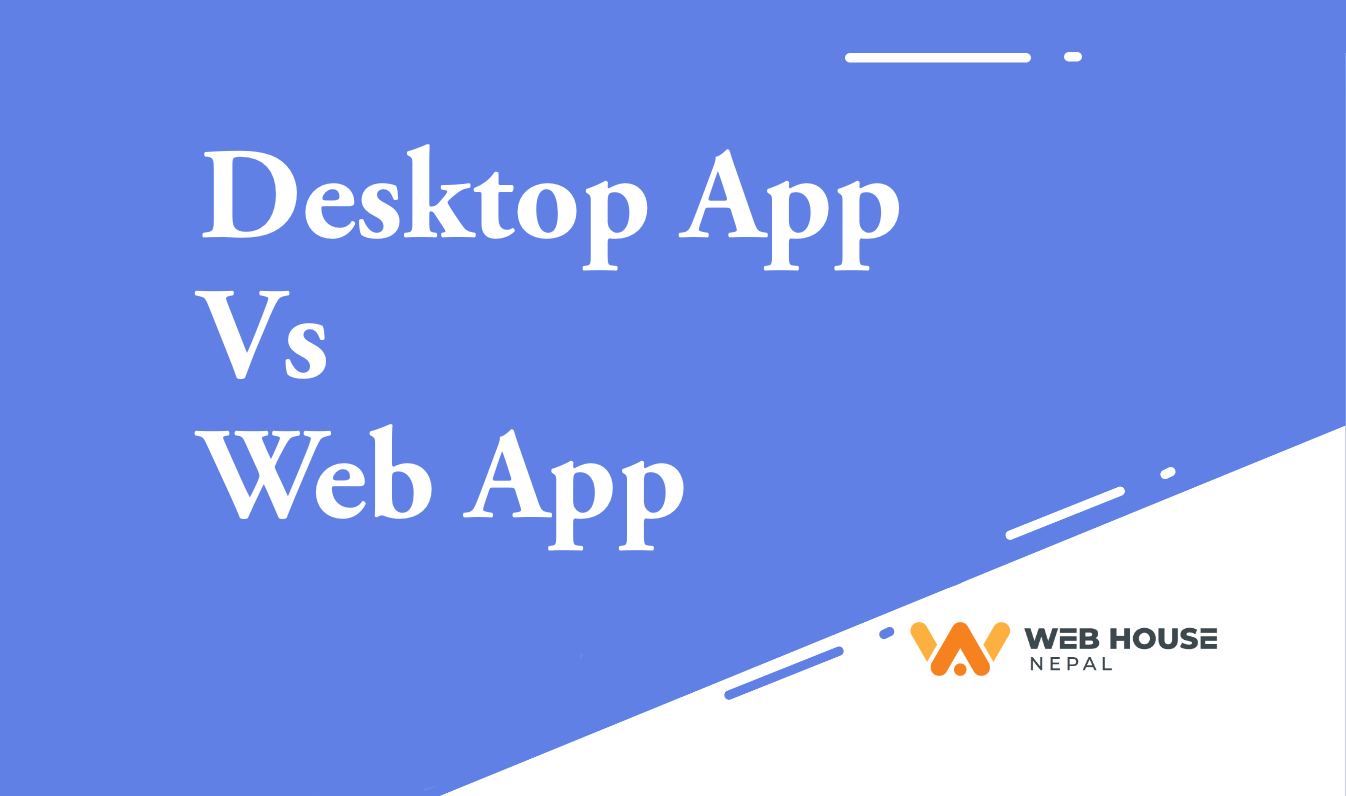Home / Blogs / Differences between Desktop Applications and Web Applications

Computer applications and digital computers have always been inseparable companions on this ever-growing journey of technology. Computer applications came into existence since the first digital computers were created. Since then, millions of applications have been created for better solutions to our activities. And recently, the rapid growth in the use of the internet and mobile devices has immensely risen the use of applications.
In general, computer applications can be distinguished into two types; desktop applications (desktop apps) and web applications (web apps). Before we get into the battle between these two, let's shed some light on what desktop applications and web applications are.
Desktop applications
Desktop applications are programs or software that run locally on a computer after installation. These applications take up space on the hard drive of the computer and generally run without an internet connection. However, some desktop applications may require an internet connection for updates and some web browsers are functional only in the presence of an internet connection. If you're deciding between browsers, understanding the difference between Brave vs Opera can be beneficial to choose a browser that best aligns with your preferences and needs. Microsoft Office applications, Adobe Illustrator, Adobe Photoshop, media players, etc. are a few examples of desktop applications.
Web applications
Web applications are not required to be installed in the computer and are accessible through web browsers in the presence of an internet connection. Contrarily to desktop apps, web applications take up space on the server. As most web applications are designed to be responsive, and interactive, and can run on computers, mobile devices, and all other devices with a web browser, they are considered to be the modern form of computer applications and their use is massively growing day by day. Google docs, YouTube, Facebook, Netflix, etc. are a few examples of web applications.
Comparison
| DESKTOP APPS | WEB APPS |
| They require installation on the computer to run. | They are accessible through web browsers and do not require installation. |
| Generally, desktop apps do not require an internet connection to run. | Web apps cannot run without an internet connection. |
| They are accessible only in the machine they are installed in. | They are accessible from anywhere and through any device with an internet connection and a web browser. |
| They take space on the hard drive of the local computer. | They take up space on the remote server. |
| Deployment and updating are to be done individually on each computer. | Deployment and updating are done only on the server. |
| They have strict hardware requirements for proper functionality. | Web apps are hardware-independent and just require a web browser and internet connection to function. |
| As they are confined to a device and single or limited users, they are highly secure. | As web apps are accessible to all through the internet, they are less secure than desktop apps. |
| Generally, they are faster than web applications. | Generally, they are slower than desktop applications. |
Conclusion
As web apps are cross-platform applications, they can be accessed remotely from anywhere and there's no hassle of installation, maintenance, and update. I personally prefer web apps and consider them to be the future of computer applications.
Likewise, desktop applications also have their own strengths. Most desktop applications can function without an internet connection and are extremely advantageous in terms of speed, security, and privacy.
So, choosing between a desktop app and a web app might not be an easy job. It all depends on what you personally prefer, what you are familiar with or habituated to, and your needs and circumstances.
Also Read :